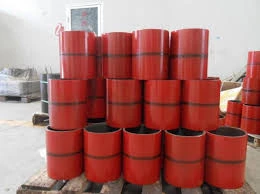- Afrikaans
- Albanian
- Amharic
- Arabic
- Armenian
- Azerbaijani
- Basque
- Belarusian
- Bengali
- Bosnian
- Bulgarian
- Catalan
- Cebuano
- Corsican
- Croatian
- Czech
- Danish
- Dutch
- English
- Esperanto
- Estonian
- Finnish
- French
- Frisian
- Galician
- Georgian
- German
- Greek
- Gujarati
- Haitian Creole
- hausa
- hawaiian
- Hebrew
- Hindi
- Miao
- Hungarian
- Icelandic
- igbo
- Indonesian
- irish
- Italian
- Japanese
- Javanese
- Kannada
- kazakh
- Khmer
- Rwandese
- Korean
- Kurdish
- Kyrgyz
- Lao
- Latin
- Latvian
- Lithuanian
- Luxembourgish
- Macedonian
- Malgashi
- Malay
- Malayalam
- Maltese
- Maori
- Marathi
- Mongolian
- Myanmar
- Nepali
- Norwegian
- Norwegian
- Occitan
- Pashto
- Persian
- Polish
- Portuguese
- Punjabi
- Romanian
- Russian
- Samoan
- Scottish Gaelic
- Serbian
- Sesotho
- Shona
- Sindhi
- Sinhala
- Slovak
- Slovenian
- Somali
- Spanish
- Sundanese
- Swahili
- Swedish
- Tagalog
- Tajik
- Tamil
- Tatar
- Telugu
- Thai
- Turkish
- Turkmen
- Ukrainian
- Urdu
- Uighur
- Uzbek
- Vietnamese
- Welsh
- Bantu
- Yiddish
- Yoruba
- Zulu
Optimizing Tubing Crossover Techniques for Enhanced Performance in Oil and Gas Operations
Understanding Tubing Crossover A Key Element in the Oil and Gas Industry
In the oil and gas industry, efficient resource extraction is crucial for maximizing productivity and minimizing costs. One of the essential techniques in this pursuit is the use of tubing crossover, a process that plays a significant role in the management of well fluids. This article delves into the concept of tubing crossover, its implications, and its importance in oil and gas operations.
What is Tubing Crossover?
Tubing crossover refers to the method of transitioning between different types of tubing or pipes that are used in well operations. Typically, this transition occurs when there is a need to switch from one size or type of tubing to another, which can be necessary based on varied conditions downhole, changes in production requirements, or maintenance and repair needs. The crossover process ensures that the fluid can continue to flow efficiently while minimizing the risk of leaks or pressure drops.
Why is Tubing Crossover Important?
The primary aim of tubing crossover is to maintain optimal flow rates and minimize downtime during well operations. Wells often undergo alterations due to changes in reservoir pressure, fluid characteristics, or production goals. For instance, as oil and gas is extracted over time, the characteristics of the reservoir can change; this might necessitate a move to a larger or differently constructed tubing to handle the increased flow rate or different fluid properties.
Moreover, the aging of equipment can also make tubing crossover necessary. As pipes deteriorate or become compromised, operators must be able to seamlessly transition to new tubing without affecting the flow of hydrocarbon production. In these scenarios, the timely execution of tubing crossover can significantly reduce lost production time, thereby increasing overall efficiency and profitability.
Types of Tubing Used in Crossover
There are various types of tubing used in crossover, each with distinct advantages. Common tubing materials include carbon steel, stainless steel, and composite materials, which are selected based on factors like corrosion resistance, strength, and the specific conditions of the well. The size of the tubing can also vary significantly, further complicating the crossover process. It is crucial to select the right materials and sizes to ensure proper functioning and safety in the well.
tubing crossover

Challenges in Tubing Crossover
While tubing crossover is indispensable, it is not without challenges. One of the primary concerns is ensuring that the transition is executed smoothly to prevent leaks or operational disruptions. Improper installation or mismatched tubing sizes can lead to complications that may require costly repairs or lead to unplanned downtime.
Another challenge involves the planning and design phases. Engineers must take into consideration various factors such as the flow rate, fluid composition, and existing infrastructure when determining the best approach for a tubing crossover. This requires advanced simulations and assessments, which can be time-consuming and resource-intensive.
Technological Advancements
Advancements in technology have significantly improved the efficiency and safety of tubing crossover operations. Modern sensors and monitoring systems allow for real-time data collection regarding pressure and flow rates, enabling operators to make informed decisions quickly. Furthermore, advanced materials and manufacturing techniques yield better-performing tubing that can withstand harsh conditions and minimize maintenance requirements.
Automation in drilling and completion processes has also revolutionized how tubing crossovers are conducted. Automated systems can perform many of the required functions, reducing human error and increasing the speed of operation.
Conclusion
In summary, tubing crossover is a vital aspect of efficient well management in the oil and gas industry. By enabling the seamless transition between different tubing types, operators can adapt to changing conditions and maintain optimal production levels. Although there are challenges associated with this process, advancements in technology continue to streamline operations and reduce risks. As the demand for oil and gas continues to grow, understanding and effectively implementing tubing crossover will remain a critical component of successful extraction practices. Emphasizing safety and efficiency will ensure that the industry can meet both current and future energy needs effectively.
-
Tubing Pup Joints: Essential Components for Oil and Gas OperationsNewsJul.10,2025
-
Pup Joints: Essential Components for Reliable Drilling OperationsNewsJul.10,2025
-
Pipe Couplings: Connecting Your World EfficientlyNewsJul.10,2025
-
Mastering Oilfield Operations with Quality Tubing and CasingNewsJul.10,2025
-
High-Quality Casing Couplings for Every NeedNewsJul.10,2025
-
Boost Your Drilling Efficiency with Premium Crossover Tools & Seating NipplesNewsJul.10,2025







